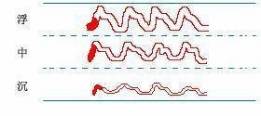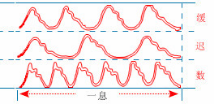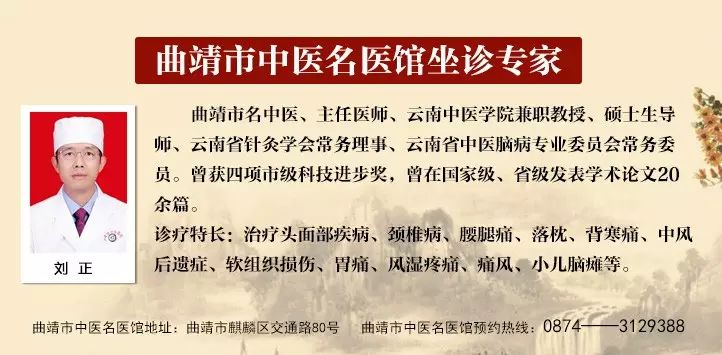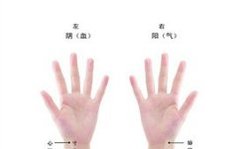This official WeChat account is managed by the Yunnan Provincial Administration of Traditional Chinese Medicine. If you have not followed us yet, please click the blue “Yunnan TCM” above to follow.

▶This article is the content of the 235th issue of the “Learn TCM with Me” column. Thank you for your support and sharing! Learn a little every day, and a healthy life will always accompany you!
Pulse diagnosis, refers to the characteristics and dynamics of the pulse, formed by the movement of qi and blood in the vessels, reflecting the functional activities of the organs and the state of pathogenic and healthy qi, serving as one of the bases for TCM diagnosis.

The pulse can be classified into various types based on frequency, rhythm, fullness, smoothness, amplitude of fluctuation, and the gentleness of movement, each reflecting different conditions of the organs and diseases. Today, we will mainly understand the characteristics of floating pulse, deep pulse, and slow pulse, as well as the diseases they indicate.
Floating pulse, as the name suggests, is a pulse that feels superficial, “like wood floating on water”. When lightly placing the fingertip at the cun (寸) position, it can be felt; it is easily obtained with light pressure but diminishes with heavy pressure.
The floating pulse is located at the surface of the body and often indicates exterior syndromes. For example, it may be caused by external pathogens leading to symptoms such as aversion to wind, cold, muscle aches, and headaches, which are manifestations of wind-cold or cold damage. It reflects the struggle between the body’s defensive qi and external pathogenic factors. If the pulse is floating and strong, it indicates that the body’s qi and blood are abundant, and the resistance is strong, preventing the pathogenic qi from entering the interior, indicating a solid exterior syndrome; if the pulse is floating and weak, it indicates a deficiency of the exterior; if the pulse is not floating, it suggests that the body’s qi and blood are deficient, and the resistance is weak, allowing external pathogens to penetrate the interior; patients with chronic illness should not exhibit a floating pulse, as chronic illness leads to qi and blood deficiency, and a pulse that is deep and slow is more appropriate. If a floating pulse is observed in a chronic patient, it indicates a sign of qi and blood collapse.
Deep pulse, is characterized by being lower than the floating pulse, felt only with heavy pressure.

The deep pulse is located deeper and often indicates interior syndromes. When the pathogenic factor penetrates the interior, if the pulse is deep and strong, it indicates an interior excess, suggesting a fierce struggle between the healthy and pathogenic qi, with both being strong; treatment should focus on expelling the pathogenic factor. If the pulse is deep and weak, it indicates an interior deficiency, often seen in the later stages of illness, where the healthy qi is weak and the pulse is weak, indicating that treatment should focus on tonifying the healthy qi.
Slow pulse, as the name suggests, is characterized by a slow pulse rate of fewer than 60 beats per minute.

The slow pulse indicates that the yang qi is weak in promoting the movement of qi and blood, often associated with cold syndromes. A strong slow pulse indicates an excess of cold, with cold pathogens stagnating within the body; treatment should focus on expelling the external cold. A weak slow pulse indicates a deficiency of cold, reflecting the body’s own yang qi deficiency; treatment should focus on warming the yang to disperse the cold.
Below are the poetic verses for the three pulse types and their associated diseases, which can be understood and memorized in conjunction with the above content.
Floating Pulse Body Type Poem:
Floating pulse travels only on the surface, like a light feather on a branch;
In autumn, it indicates no illness, but in chronic cases, it can be alarming.
Floating Pulse Disease Poem:
Floating pulse indicates exterior yang diseases, with wind and heat or cold constraining;
Strong and floating often indicates wind-heat, while weak and floating suggests blood deficiency.
Floating at the cun position indicates headaches and dizziness from wind, or phlegm obstructing the chest;
At the guan position, earth is weak while wood is strong, and at the chi position, urination is obstructed.
Deep Pulse Body Type Poem:
Water flows down, the pulse comes deep, smooth and even between the bones;
For women at the cun position and men at the chi position, this is considered balanced.
Deep Pulse Disease Poem:
Deep and hidden indicates internal diseases, with heat and cold alternating and phlegm present;
Weak and deep indicates deficiency of qi, while strong and deep suggests accumulation of cold.
At the cun position, phlegm stagnates and water accumulates in the chest;
At the guan position, it indicates internal cold pain and obstruction;
At the chi position, it indicates kidney deficiency with heavy lower back and urinary issues.
Slow Pulse Body Type Poem:
Slow pulse arrives with only three beats, yang cannot overcome yin, qi and blood are cold;
Just separate floating and deep to discern, dispelling yin requires enhancing the source of fire.
Slow Pulse Disease Poem:
Slow pulse indicates organ diseases or phlegm accumulation, while deep stagnation requires careful observation;
A strong and slow pulse indicates cold pain, while a weak and slow pulse indicates deficiency of cold.
At the cun position, it must be cold in the upper jiao, while at the guan position, it indicates unbearable cold pain;
At the chi position, it indicates kidney deficiency with heaviness in the lower back and urinary issues.
Author Biography

Zhou Yanxia: PhD candidate, graduated from Chengdu University of Traditional Chinese Medicine, specializing in TCM Internal Medicine with a focus on endocrinology, currently working in the Diabetes Department of Qujing City TCM Hospital.
Editing/Liu Wei Typesetting/Gao Haiyan


